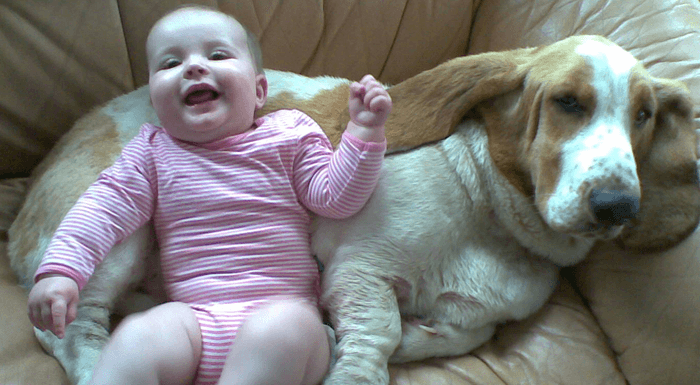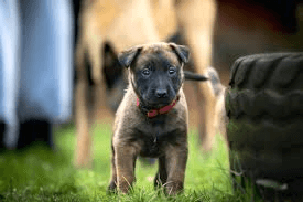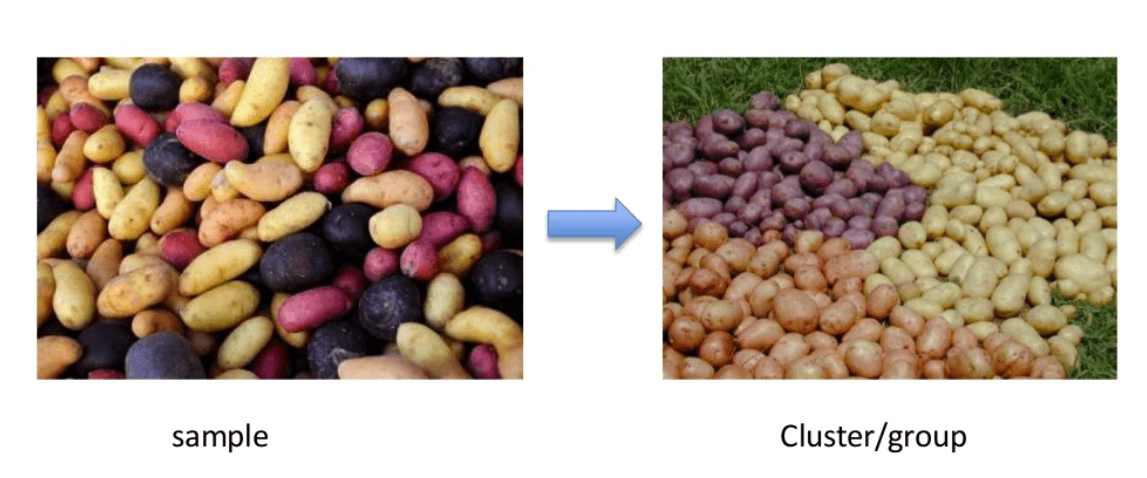How Many Unlicensed Registered Electritans Can A Journyman Supervise
What is Unsupervised Learning?
Unsupervised Learning is a machine learning technique in which the users do not need to supervise the model. Instead, it allows the model to work on its own to discover patterns and information that was previously undetected. Information technology mainly deals with the unlabelled data.
Unsupervised Learning Algorithms
Unsupervised Learning Algorithms allow users to perform more circuitous processing tasks compared to supervised learning. Although, unsupervised learning tin can be more unpredictable compared with other natural learning methods. Unsupervised learning algorithms include clustering, anomaly detection, neural networks, etc.
In this tutorial, yous will learn:
- Example of Unsupervised Machine Learning
- Why Unsupervised Learning?
- Clustering Types of Unsupervised Learning Algorithms
- Clustering
- Clustering Types
- Association
- Supervised vs. Unsupervised Car Learning
- Applications of Unsupervised Machine Learning
- Disadvantages of Unsupervised Learning
Case of Unsupervised Motorcar Learning
Let'southward, take an example of Unsupervised Learning for a baby and her family dog.

She knows and identifies this dog. Few weeks subsequently a family friend brings forth a domestic dog and tries to play with the infant.

Baby has not seen this canis familiaris before. Just it recognizes many features (2 ears, eyes, walking on four legs) are like her pet dog. She identifies the new animal as a dog. This is unsupervised learning, where yous are not taught but you learn from the data (in this case data about a dog.) Had this been supervised learning, the family friend would accept told the baby that it's a canis familiaris as shown in the higher up Unsupervised Learning case.
Why Unsupervised Learning?
Hither, are prime reasons for using Unsupervised Learning in Car Learning:
- Unsupervised car learning finds all kind of unknown patterns in data.
- Unsupervised methods assistance you to find features which can be useful for categorization.
- Information technology is taken place in existent time, so all the input data to be analyzed and labeled in the presence of learners.
- It is easier to get unlabeled data from a reckoner than labeled data, which needs manual intervention.
Clustering Types of Unsupervised Learning Algorithms
Below are the clustering types of Unsupervised Machine Learning algorithms:
Unsupervised learning problems further grouped into clustering and clan bug.
Clustering

Clustering
Clustering is an of import concept when it comes to unsupervised learning. It mainly deals with finding a structure or pattern in a collection of uncategorized data. Unsupervised Learning Clustering algorithms volition process your information and find natural clusters(groups) if they exist in the data. Yous tin too modify how many clusters your algorithms should identify. Information technology allows yous to conform the granularity of these groups.
In that location are different types of clustering you tin utilize:
Sectional (sectionalization)
In this clustering method, Data are grouped in such a way that one data tin can belong to i cluster only.
Instance: K-ways
Agglomerative
In this clustering technique, every information is a cluster. The iterative unions between the two nearest clusters reduce the number of clusters.
Case: Hierarchical clustering
Overlapping
In this technique, fuzzy sets is used to cluster information. Each point may vest to 2 or more clusters with separate degrees of membership.
Here, data will be associated with an advisable membership value. Example: Fuzzy C-Means
Probabilistic
This technique uses probability distribution to create the clusters
Case: Following keywords
- "homo's shoe."
- "women'south shoe."
- "women's glove."
- "man'south glove."
can exist clustered into two categories "shoe" and "glove" or "man" and "women."
Clustering Types
Following are the clustering types of Motorcar Learning:
- Hierarchical clustering
- K-means clustering
- K-NN (k nearest neighbors)
- Chief Component Analysis
- Atypical Value Decomposition
- Independent Component Assay
Hierarchical Clustering
Hierarchical clustering is an algorithm which builds a hierarchy of clusters. It begins with all the data which is assigned to a cluster of their own. Here, two close cluster are going to be in the aforementioned cluster. This algorithm ends when there is but 1 cluster left.
1000-means Clustering
K ways information technology is an iterative clustering algorithm which helps you to find the highest value for every iteration. Initially, the desired number of clusters are selected. In this clustering method, you need to cluster the information points into k groups. A larger g means smaller groups with more granularity in the aforementioned style. A lower chiliad means larger groups with less granularity.
The output of the algorithm is a group of "labels." It assigns data betoken to i of the m groups. In k-ways clustering, each group is defined past creating a centroid for each group. The centroids are like the heart of the cluster, which captures the points closest to them and adds them to the cluster.
Chiliad-mean clustering further defines ii subgroups:
- Agglomerative clustering
- Dendrogram
Agglomerative clustering
This type of Chiliad-ways clustering starts with a fixed number of clusters. It allocates all data into the exact number of clusters. This clustering method does not require the number of clusters K every bit an input. Agglomeration process starts past forming each data as a single cluster.
This method uses some altitude measure, reduces the number of clusters (one in each iteration) by merging process. Lastly, we take one big cluster that contains all the objects.
Dendrogram
In the Dendrogram clustering method, each level will represent a possible cluster. The height of dendrogram shows the level of similarity between ii join clusters. The closer to the bottom of the procedure they are more similar cluster which is finding of the group from dendrogram which is not natural and generally subjective.
K- Nearest neighbors
M- nearest neighbour is the simplest of all auto learning classifiers. It differs from other car learning techniques, in that it doesn't produce a model. It is a simple algorithm which stores all available cases and classifies new instances based on a similarity mensurate.
Information technology works very well when in that location is a distance betwixt examples. The learning speed is slow when the grooming set is large, and the altitude adding is nontrivial.
Chief Components Analysis
In example you want a college-dimensional infinite. You need to select a ground for that infinite and just the 200 well-nigh of import scores of that ground. This base is known as a principal component. The subset you select constitute is a new infinite which is small in size compared to original infinite. It maintains as much of the complexity of data as possible.
Clan
Clan rules allow you to establish associations amid data objects within large databases. This unsupervised technique is most discovering interesting relationships between variables in large databases. For example, people that buy a new home most likely to buy new furniture.
Other Examples:
- A subgroup of cancer patients grouped by their gene expression measurements
- Groups of shopper based on their browsing and purchasing histories
- Movie group by the rating given by movies viewers
Supervised vs. Unsupervised Machine Learning
Here is the main difference between Supervised vs. Unsupervised Learning:
| Parameters | Supervised machine learning technique | Unsupervised auto learning technique |
|---|---|---|
| Input Data | Algorithms are trained using labeled information. | Algorithms are used against data which is not labelled |
| Computational Complication | Supervised learning is a simpler method. | Unsupervised learning is computationally complex |
| Accuracy | Highly accurate and trustworthy method. | Less accurate and trustworthy method. |
Applications of Unsupervised Motorcar Learning
Some application of Unsupervised Learning Techniques are:
- Clustering automatically split the dataset into groups base on their similarities
- Anomaly detection can observe unusual data points in your dataset. It is useful for finding fraudulent transactions
- Clan mining identifies sets of items which often occur together in your dataset
- Latent variable models are widely used for information preprocessing. Like reducing the number of features in a dataset or decomposing the dataset into multiple components
Disadvantages of Unsupervised Learning
- Y'all cannot become precise data regarding data sorting, and the output as data used in unsupervised learning is labeled and not known
- Less accuracy of the results is considering the input data is not known and not labeled by people in advance. This means that the auto requires to practise this itself.
- The spectral classes do not e'er correspond to advisory classes.
- The user needs to spend time interpreting and label the classes which follow that classification.
- Spectral properties of classes tin can besides change over fourth dimension then you can't have the aforementioned class information while moving from one epitome to another.
Summary
- Unsupervised learning is a auto learning technique, where y'all practise not need to supervise the model.
- Unsupervised machine learning helps you to finds all kind of unknown patterns in data.
- Clustering and Association are ii types of Unsupervised learning.
- Four types of clustering methods are i) Exclusive 2) Agglomerative 3) Overlapping 4) Probabilistic.
- Important clustering types are: one)Hierarchical clustering 2) K-means clustering 3) K-NN 4) Chief Component Assay 5) Singular Value Decomposition 6) Independent Component Analysis.
- Association rules allow y'all to establish associations amid data objects within big databases.
- In Supervised learning, Algorithms are trained using labelled data while in Unsupervised learning Algorithms are used against data which is not labelled.
- Anomaly detection can discover important data points in your dataset which is useful for finding fraudulent transactions.
- The biggest drawback of Unsupervised learning is that you cannot get precise information regarding information sorting.
Source: https://www.guru99.com/unsupervised-machine-learning.html
Posted by: furlonghatiankin.blogspot.com


0 Response to "How Many Unlicensed Registered Electritans Can A Journyman Supervise"
Post a Comment